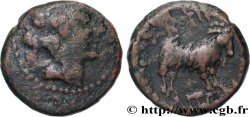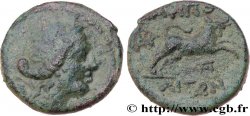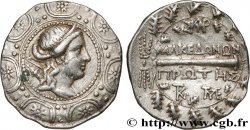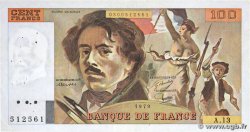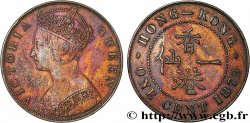bgr_489981 - MACEDONIA - AMPHIPOLIS Tétradrachme stéphanophore
Not available.
Item sold on our e-shop (2020)
Price : 480.00 €
Item sold on our e-shop (2020)
Price : 480.00 €
Type : Tétradrachme stéphanophore
Date: c. 167/158 - 149 AC.
Mint name / Town : Amphipolis, Macédoine
Metal : silver
Diameter : 30,5 mm
Orientation dies : 12 h.
Weight : 16,88 g.
Coments on the condition:
Exemplaire sur un flan irrégulier, un peu court au revers sur la couronne. Joli droit. Beau revers. Patine de collection ancienne avec des reflets mordorés
Catalogue references :
Predigree :
Cet exemplaire provient du stock InAsta (46)
Obverse
Obverse legend : ANÉPIGRAPHE.
Obverse description : Buste diadémé et drapé d'Artémis Tauropolos à droite, l'arc et le carquois sur l'épaule, placé au centre d'un bouclier macédonien orné d'étoiles.
Reverse
Reverse description : Légende de chaque côté d'une massue ; au-dessus, un monogramme.
Reverse legend : MAKEDONWN // PROTHS// (SAUHR)/ (TKr)/ (ToME)
Reverse translation : (Macédoine première).
Commentary
Les auteurs de l’AMNG avaient recensé cinquante-quatre exemplaires pour cette variété. Au droit, sur le bouclier macédonien, le buste d’Artémis est entouré d’une combinaison luni-solaire associant croissant de lune et astre solaire.








 Report a mistake
Report a mistake Print the page
Print the page Share my selection
Share my selection Ask a question
Ask a question Consign / sell
Consign / sell
 Full data
Full data
